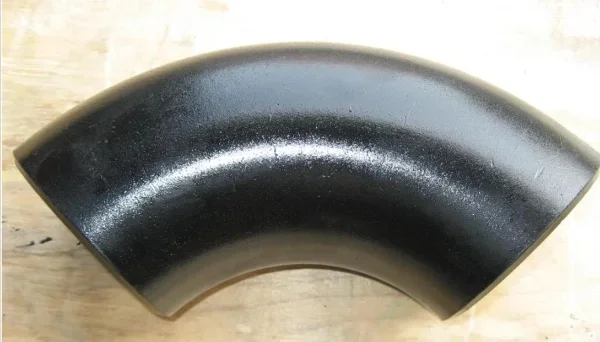Process of Doing Pressure Test For Elbow Steel Tube
The pressure test for an elbow steel tube is a non-destructive testing method used to determine the integrity and strength of the tube. The process involves applying pressure to the tube and monitoring its behavior under the load. Here are the general steps involved in the pressure test for an elbow steel tube:
1. Preparation: The first step is to prepare the elbow steel tube for testing. This may involve cleaning the surface of the tube, removing any debris or contaminants, and ensuring that the tube is properly secured in the testing apparatus.
2. Pressure application: Once the tube is prepared, pressure is applied to the tube using a hydraulic pump or other pressure source. The pressure is gradually increased to the desired level, and the tube is monitored for any signs of deformation, leakage, or failure.
3. Pressure holding: After the pressure has been applied, the tube is held at the maximum pressure for a specified period of time. This allows for any potential weaknesses or defects in the tube to be identified.
4. Pressure release: Once the holding period is complete, the pressure is slowly released from the tube. The tube is monitored for any changes in shape or behavior as the pressure is released.
5. Inspection: After the pressure test is complete, the tube is inspected for any signs of damage or failure. This may involve visual inspection, ultrasonic testing, or other non-destructive testing methods.
6. Reporting: Finally, the results of the pressure test are recorded and reported. This may include the maximum pressure applied, any signs of deformation or failure, and any recommendations for further testing or inspection.

When carrying out a pressure test, one also needs to pay attention to the following points:
Select the appropriate test equipment and test pressure to ensure the safety of the test process.
Before the test, the elbow steel pipe needs to be cleaned and inspected to ensure that the elbow steel pipe meets the relevant standards and requirements.
During the test, it is necessary to pay attention to the reading of the pressure gauge and the deformation of the elbow steel pipe to ensure the safety of the test process.
During the test, it is necessary to maintain the stability of the test equipment and the elbow steel pipe to avoid accidents during the test.
After the test is over, it is necessary to gradually release the pressure to discharge the water from the elbow steel pipe to avoid damage to the elbow steel pipe.
After the test, the testing machine should be cleaned and maintained to ensure its normal operation.
In short, the pressure test on the elbow steel pipe is an important means to ensure its quality and safety. When carrying out a pressure test, it is necessary to pay attention to the calibration of the test equipment, the selection of the test pressure, and the monitoring of the test process to ensure the accuracy and reliability of the test results.
Overall, the pressure test for an elbow steel tube is a critical step in ensuring the safety and reliability of the tube in its intended application. By carefully following the testing procedures and analyzing the results, engineers and technicians can identify any potential weaknesses or defects in the tube and take appropriate measures to address them.
How To Choose Between Bend And Elbow






